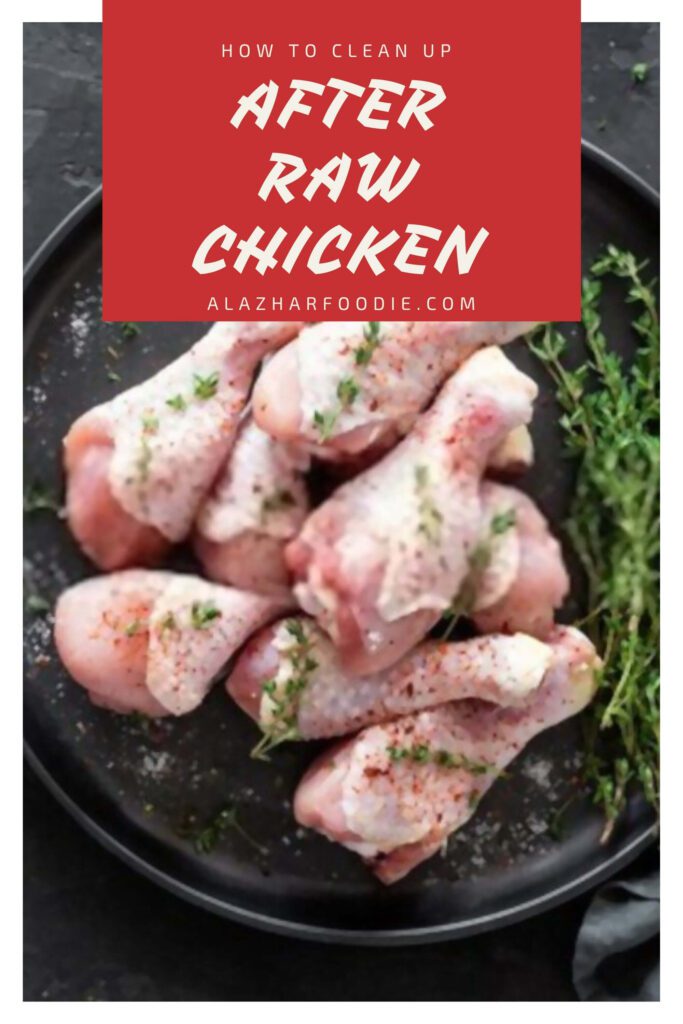How To Clean Up After Raw Chicken Cooking
Topic : How To Clean Up After Raw Chicken Cooking

When cooking with chicken, it is important to make sure it reaches a certain temperature before consuming it. Still, it is also essential to sanitize the kitchen well after handling items. Raw chicken, meat and fish carry many diseases that can affect our health; therefore, it is essential to follow proper procedures for cleaning surfaces, utensils, and hands to avoid cross-contamination and disease.
- Take the raw chicken out of its packaging and place it directly on the cutting board with tongs.
- Dispose of packaging immediately to avoid contaminating other surfaces.
- Once the chicken is prepared, wash all surfaces with hot, soapy water and a clean cloth.
- Use another cutting board to chop or slice the remaining ingredients.
- Create a cleaning solution by adding a tablespoon of bleach per gallon of water.
- Disinfect the cutting board by flooding the surface with the solution and allowing it to sit in the mixture for several minutes.
- Remove from the solution and rinse the board with water and allow to air dry.
- Use clean, hot, soapy water to scrub and sanitize any utensils that have handled raw chicken.
- Finally, please wash your hands thoroughly with soap and water, making sure to place the tops of your hands, under your fingernails and between your fingers, then dry them.
How To Clean Up After Raw Chicken Cooking
For almost everything, we believe that boiling water and soap are great for regular cleaning and disinfection. (I don’t have a phobia about germs, and in fact, I think antibacterial cleansers do more harm than good.) The times when you might want to go beyond soap and water, it’s when you’ve handled chicken.
For starters, we don’t think you should rinse your chicken. Washing chicken breasts actually spreads bacteria around the sink or countertops when water splashes onto those germs. So skip this step. Second, some people like to have a separate cutting board for the chicken, and if that makes you more comfortable, go for it. But contrary to popular belief, we don’t think plastic is the most hygienic cutting board for the same. This University of Michigan study found that more bacteria were collected from a plastic board than a wooden board, and once a plastic board was marked with a knife, the surface became impossible to remove. to clean and disinfect manually. We think wooden cutting boards are great for chicken and meat.
If you cook chicken, here are two essential kitchen hygiene rules to follow:
- Do not cut raw chicken on the same cutting board as the other ingredients without cleaning it thoroughly between uses;
- Don’t use the same knife that you used to cut raw chicken for anything else before cleaning it.
A question home cooks often ask themselves is, “What’s the best way to clean my knife after cutting raw chicken?
The best way to clean a knife after cutting raw chicken is to wash it by hand with soapy water, then soak it in a solution of 1 liter of water and 1 tablespoon of water. Bleach. Cleaning the knife by hand will remove all debris and the bleach will kill all bacteria. After soaking the knife, rinse it with clean water and dry it.
How To Disinfect After Cooking Chicken
There are two areas here: those that use bleach to disinfect and those that don’t. Those who oppose bleach worry about its proven toxicity to humans and the environment, while those who are in favor say there is no harm when it is used very. small quantities. It is common in professional kitchens to wash cutting boards and utensils with a diluted bleach solution after handling meat. A reader from Kitchen, who works in nutrition, ran a test to see how much bleach is needed to sanitize surfaces and points out that only a small amount is needed. Here is her suggested bleach disinfectant recipe. Note: The bleach solution must remain on the surface for 10 minutes to be effective.
Fill a spray bottle of any size with cold water (the tap is sufficient). Take the spray nozzle and dip the rod in the bleach, up to 3/4 of the length of the rod. Place the soaked rod in a spray bottle of water, stir it so that the bleach soaks into the water. Repeat 2 more times. Tada! Ready! I spray cutting boards, tongs used to handle meat, sink, faucet, and surrounding counter after preparing the meat. Every other day I spray the drain area of the sink. Otherwise, I scrub the sink and whatever smells bad with baking soda and dish soap, spray vinegar, and rinse.
If you’d rather not use bleach in your kitchen, spray cutting boards and utensils first with vinegar, then 3% hydrogen peroxide, then rinse. Apparently, the combination of vinegar and hydrogen peroxide is an effective disinfectant. Another option? If you can, place the boards in the sun for a few hours.
Article You May Like To Read:
- Difference Between Paleo And Whole30
- Difference Between Gumbo And Jambalaya
- Difference Between Stuffing And Dressing




Pingback: How Long Does Uncooked Chicken Last In The Refrigerator? » Al Azhar Foodie
Pingback: How To Clean Gas Stove Grates Naturally? » Al Azhar Foodie
Pingback: New York Times Enchilada Recipe - Copycat » Al Azhar Foodie
Pingback: How Long Can Cooked Chicken Sit Out? - Holistic Meaning
Pingback: Wildfire Chicken Salad Recipe » Al Azhar Foodie
Pingback: Marinated Chicken Wings Recipe Oven » Al Azhar Foodie